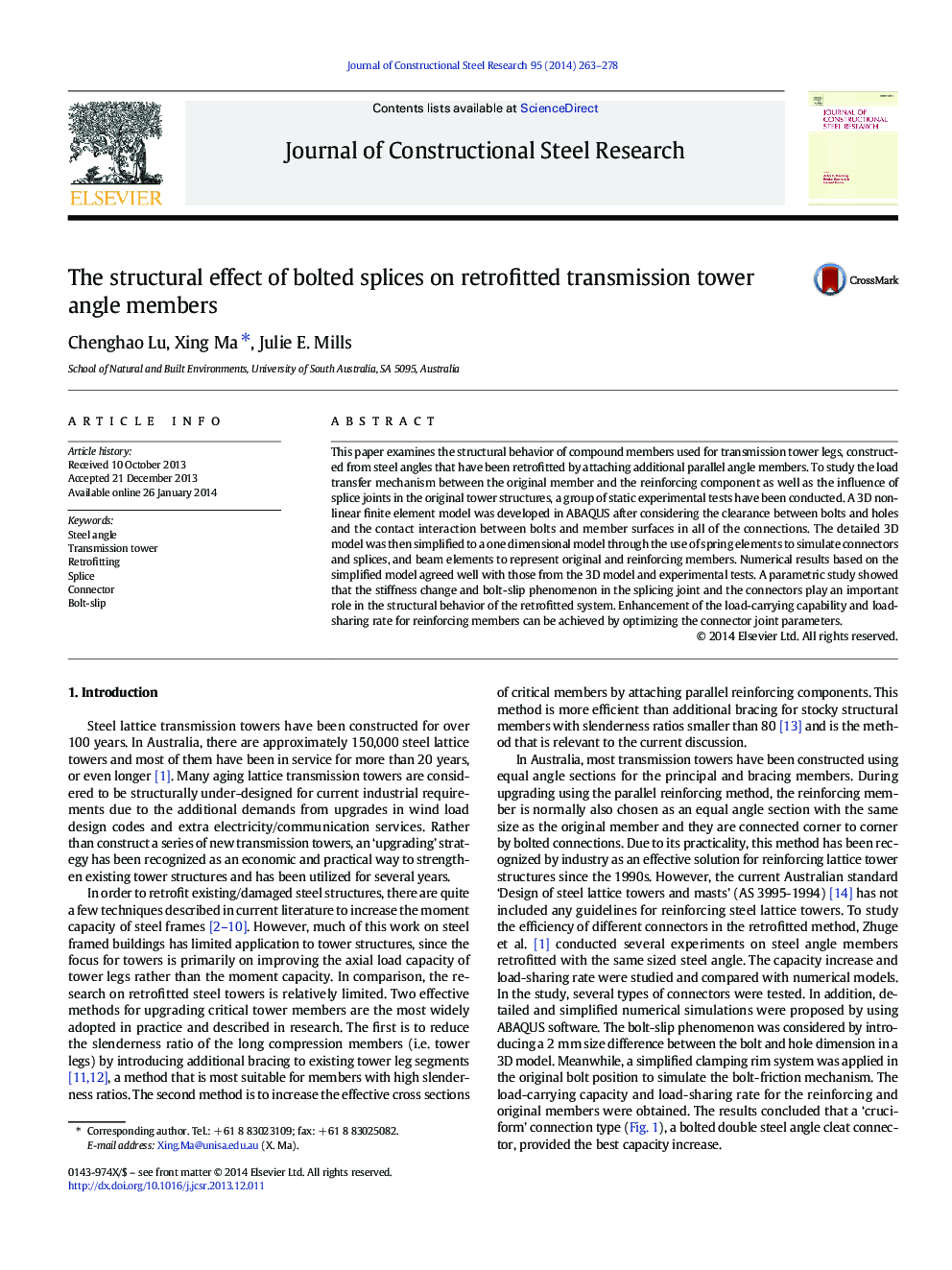| Article ID | Journal | Published Year | Pages | File Type |
|---|---|---|---|---|
| 284786 | Journal of Constructional Steel Research | 2014 | 16 Pages |
•Retrofitted tower angle legs are studied both numerically and experimentally.•Load capacity and load sharing behaviour of the reinforced member are analysed.•Simplified 1D model with high precision has been developed.•The structural effect of bolted splices in the original member has been investigated.•Less stiff/torqued splices in original members improve the overall load capacity.
This paper examines the structural behavior of compound members used for transmission tower legs, constructed from steel angles that have been retrofitted by attaching additional parallel angle members. To study the load transfer mechanism between the original member and the reinforcing component as well as the influence of splice joints in the original tower structures, a group of static experimental tests have been conducted. A 3D nonlinear finite element model was developed in ABAQUS after considering the clearance between bolts and holes and the contact interaction between bolts and member surfaces in all of the connections. The detailed 3D model was then simplified to a one dimensional model through the use of spring elements to simulate connectors and splices, and beam elements to represent original and reinforcing members. Numerical results based on the simplified model agreed well with those from the 3D model and experimental tests. A parametric study showed that the stiffness change and bolt-slip phenomenon in the splicing joint and the connectors play an important role in the structural behavior of the retrofitted system. Enhancement of the load-carrying capability and load-sharing rate for reinforcing members can be achieved by optimizing the connector joint parameters.
